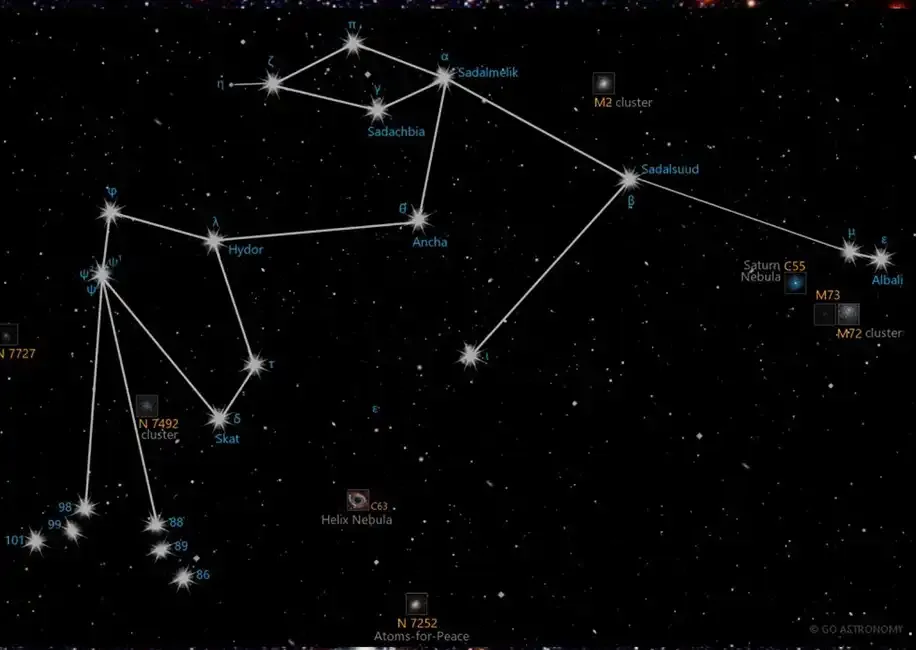
Aquarius is a zodiac constellation, representing the water bearer, and is one of the oldest recognized constellations in the night sky. It is located in the region of the sky known as the "Sea," which is home to other water-related constellations like Pisces and Capricornus. Aquarius is a large constellation but relatively faint, making it somewhat challenging to observe without ideal conditions.
Key Features
Aquarius is known for its large size, covering an area of 980 square degrees, making it the 10th largest constellation. Despite its size, it lacks extremely bright stars, which can make it difficult to spot in light-polluted areas. The constellation's key features include several interesting star clusters and nebulae, such as the Helix Nebula, a large planetary nebula that is one of the closest to Earth, and the globular cluster M2.
Mythology
In Greek mythology, Aquarius is associated with Ganymede, a beautiful young boy whom Zeus took to Olympus to serve as the cupbearer to the gods. The constellation is also linked to other water-related deities and myths in different cultures, often symbolizing the life-giving and purifying power of water.
Notable Stars
- Sadalsuud (Beta Aquarii): The brightest star in Aquarius, a yellow supergiant located about 540 light-years from Earth.
- Sadalmelik (Alpha Aquarii): A yellow supergiant approximately 760 light-years away, it is the second-brightest star in the constellation.
- Sadachbia (Gamma Aquarii): A blue-white star, part of the "Water Jar" asterism within Aquarius.
- Zeta Aquarii: A binary star system that can be observed with a small telescope.
Visibility
Aquarius is best visible in the Southern Hemisphere, but it can also be observed in the Northern Hemisphere during autumn. The constellation is visible between latitudes +65° and -90°, with its best visibility occurring at around 10:00 PM local time during the month of October.
Tips for Observing
- Find a Dark Sky Location: Since Aquarius is a faint constellation, it’s best observed away from city lights where the sky is darker.
- Use Binoculars or a Telescope: While the constellation can be seen with the naked eye, binoculars or a small telescope will help in identifying its key stars and features, such as the Helix Nebula.
- Locate the Water Jar: Look for the asterism known as the "Water Jar," which is formed by four stars (Gamma, Zeta, Pi, and Eta Aquarii) and is a good starting point for identifying Aquarius.
- Observe in the Fall: For observers in the Northern Hemisphere, the best time to observe Aquarius is during the fall months, particularly in October, when it is highest in the sky during the evening.
